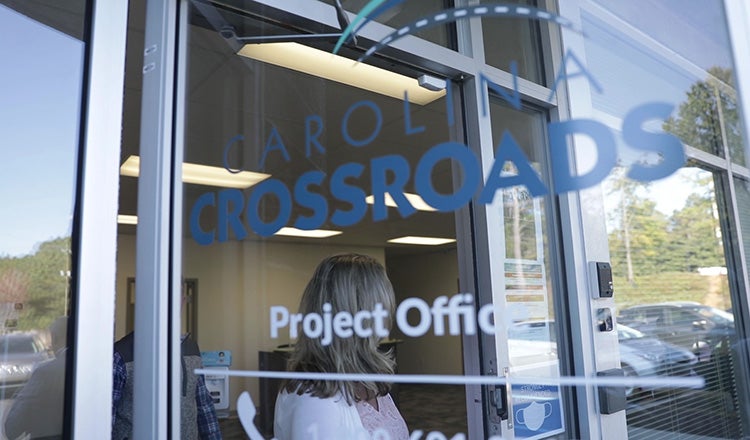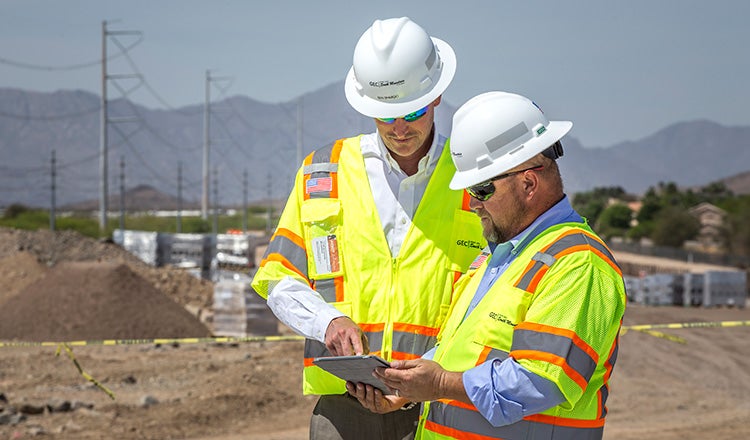
3 Ways Staff Augmentation Can Create Stronger, More Flexible Transportation Agencies
Benefits of Increasing Capacity with Consultant Staff
By Erin Slayton, P.E., and Mike Tugman, P.E.
A dramatic increase in U.S. federal funding has provided states an opportunity to deliver once-in-a-generation programs to benefit their communities. But even with larger budgets, many local and state transportation agencies face staffing constraints due to competition, retirements and emerging technologies. In this environment, some agencies have embraced staff augmentation as a solution that helps them meet aggressive deadlines and community expectations.
Consultants serving alongside agency staff can provide supplemental and complementary expertise. Often this is tied to a major program that requires added capacity or specialized knowledge that the agency needs only for the duration of the project. Implementation can vary, from broad professional support services to program-specific approaches. In many cases, consultant staff are co-located within an agency, working in the same offices to facilitate communication and collaboration.
Many agencies have already seen the benefits of staff augmentation: increased workforce capacity, access to specialized expertise and better workload management. The Florida Department of Transportation, for instance, has used this approach extensively, with its agency workforce reduced by about half in the last 30 years while its work program has grown by a factor of 10.
In our years of experience providing assistance to agencies across North America, we’ve discovered three notable benefits of staff augmentation, above and beyond the expected outcomes of meeting schedule and cost goals:
- Built-in staffing flexibility
- Daily knowledge sharing
- Improved collaboration and efficiency

Built-In Staffing Flexibility
In today’s complex and lengthy infrastructure projects, it’s impossible to anticipate every situation or need, which is why flexibility is extremely valuable. Using consultants as an extension of staff allows scalability for programs in ways that may not be available using agency employees. For example, if funding falls through or is rerouted, a staff augmentation approach allows flexibility in reducing the number of consultant staff assigned to the project without impacting the agency’s employees. Conversely, if a large grant is secured, we can add staff quickly to a project and assist in moving it forward. In Florida, our embedded project managers have also stepped in to assist when FDOT staff leave, keeping projects on track and significantly reducing impacts to schedules until new employees are hired.
This can also have a positive impact on current agency employees. Consultants can provide coverage for short-term absences or leave, allowing agency staff to maintain a better work-life balance and reduce burnout. They can also allow the agency to focus on their regular programs and services while using consultant staff for special projects or those that will only last a short time. This flexibility is particularly important given the often-aggressive schedules of today’s programs. It can also lead to increased staff satisfaction and retention, as employees feel supported and able to manage their personal and professional responsibilities.
In Virginia, where we have a long-term agreement with the Virginia Department of Transportation to help with its major projects program in the Hampton Roads District, this flexibility allows us to respond quickly to agency requests. With staff co-located in the district office, it’s easy for district leaders to reach our team to alert us to urgent needs. If an unexpected challenge arises, we can quickly pull in staff from HDR’s global program within hours if needed.

Daily Knowledge Sharing
State transportation agencies face large challenges in hiring and retaining the level of staff they need, and developing the next generation of staff is high on the list of priorities for many agencies. While many agencies have well-established training programs and accomplished senior staff, that staff is also very busy. Collaboration between consultants and agency staff is another opportunity for in-house employees to develop important skills and experience. This is particularly true in areas of emerging technology or newer project delivery methods, where agencies may be using methods less common in their state or region. Augmentation opens the door to access more specialized national expertise who bring insights and best practices from around the country while also bolstering local resources.
Our philosophy is built on putting the team first. In practical terms, this means our experts share their considerable experience openly with everyone. Just as staff are enriched through conversations and knowledge sharing at industry conferences, working side by side with consultants provides an avenue for learning best practices and approaches in use elsewhere. As agency leaders contemplate the future of staff augmentation in their organizations, one consideration can be where there may be knowledge gaps, what skillsets are needed and how a blended team can help agency staff grow.

Improved Collaboration and Efficiency
Major infrastructure projects can be intricate puzzles, with many different disciplines, complex scheduling and multiple (and sometimes competing) stakeholders. At its best, staff augmentation can reduce some of that complexity for agencies. Taking full advantage of this benefit requires a great deal of trust, but the payoff can be considerable.
When an agency trusts the consultant staff, it fosters better communication, leading to better collaboration and more effective project execution. This can save time and money by reducing misunderstandings and miscommunications. In Virginia’s Hampton Roads District, for instance, VDOT has benefited from a streamlined approach where we act as an extension of VDOT’s staff in a very real sense, attending meetings, assisting in programming and scheduling, and overseeing other consultants on $100 million-plus projects.
Trust is earned, and a track record of success is important. We began by proving our commitment and value with a small team, which has grown as clients recognized that we were dedicated to a partnership that prioritizes their goals, not a transactional relationship. Our focus of providing a seamless extension of agency staff is founded on an approach of “leaving our logos at the door,” as we like to say. It’s the same approach that we’ve seen lead to success on major programs in Arizona, Virginia, Washington and elsewhere. We recognize that we begin every assignment with a high bar, and it’s our job to raise that bar even further.
At the end of the day, every program is — rightly — judged on whether it is delivered on time, on budget and meets stakeholder expectations. But as agencies pursue those goals, a strong staff augmentation approach built with trusted consultants can also help utilize new efficiencies, bolster expertise of existing staff and provide strong teams that flex as conditions change. We invite transportation agencies to consider these benefits as they ponder the needs of their communities and explore ways to create adaptable and resilient programs well positioned for the future.





